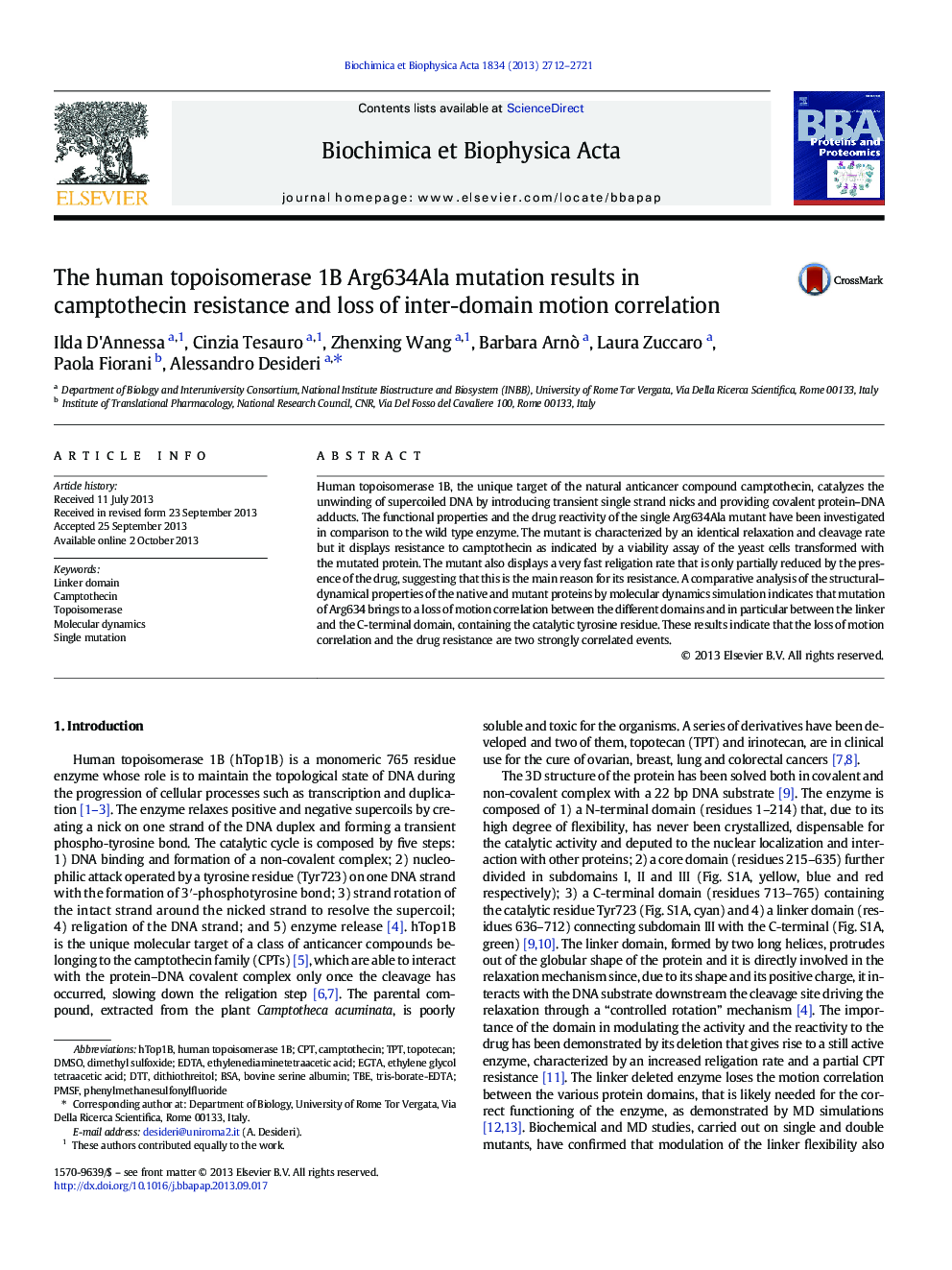| Article ID | Journal | Published Year | Pages | File Type |
|---|---|---|---|---|
| 7560941 | Biochimica et Biophysica Acta (BBA) - Proteins and Proteomics | 2013 | 10 Pages |
Abstract
Human topoisomerase 1B, the unique target of the natural anticancer compound camptothecin, catalyzes the unwinding of supercoiled DNA by introducing transient single strand nicks and providing covalent protein-DNA adducts. The functional properties and the drug reactivity of the single Arg634Ala mutant have been investigated in comparison to the wild type enzyme. The mutant is characterized by an identical relaxation and cleavage rate but it displays resistance to camptothecin as indicated by a viability assay of the yeast cells transformed with the mutated protein. The mutant also displays a very fast religation rate that is only partially reduced by the presence of the drug, suggesting that this is the main reason for its resistance. A comparative analysis of the structural-dynamical properties of the native and mutant proteins by molecular dynamics simulation indicates that mutation of Arg634 brings to a loss of motion correlation between the different domains and in particular between the linker and the C-terminal domain, containing the catalytic tyrosine residue. These results indicate that the loss of motion correlation and the drug resistance are two strongly correlated events.
Keywords
Related Topics
Physical Sciences and Engineering
Chemistry
Analytical Chemistry
Authors
Ilda D'Annessa, Cinzia Tesauro, Zhenxing Wang, Barbara Arnò, Laura Zuccaro, Paola Fiorani, Alessandro Desideri,
